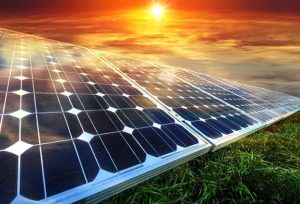Which Solar Panels Perform Best in Hot Climates?
Diving into the world of solar energy, a burning question often surfaces: which solar panels offer the most bang for your buck in the sizzling embrace of hot climates? Not all solar panels are created equal, especially when the mercury rises. Let's shed some light on the champions of efficiency and durability under the sun's relentless gaze.

Understanding the Heat Dilemma
First off, it's crucial to grasp why heat matters. Solar panels convert sunlight into electricity, but high temperatures can reduce their efficiency. The science behind it is simple yet profound: as temperatures climb, the semiconductor material within the panels becomes overly excited, leading to less efficient electron movement. Typically, solar panel efficiency drops by about 0.3% to 0.5% for every degree Celsius above 25°C (77°F).
The Contenders for the Throne
Monocrystalline Silicon Panels: These panels, known for their sleek black appearance, top the list for hot climate performance. They boast a high efficiency range of 18% to 22%, and their single-crystal structure endows them with a superior heat tolerance. This means they maintain performance and longevity even as the thermometer soars.
Thin-Film Panels: The dark horse in hot weather, thin-film panels, particularly those made from cadmium telluride (CdTe) or amorphous silicon, are known for their low temperature coefficient. This trait enables them to endure scorching conditions with minimal efficiency loss. While their overall efficiency might be lower than their monocrystalline counterparts, ranging from 10% to 13%, their resilience in heat is commendable.
Polycrystalline Silicon Panels: Often recognized by their blue hue, polycrystalline panels are more cost-effective but slightly less efficient in hot climates compared to monocrystalline panels. With efficiency rates between 15% and 17%, they still hold their ground under the sun, albeit with a slightly higher efficiency loss as temperatures rise.
The Champion's Edge: Heat Tolerance and Efficiency
When the heat is on, the best solar panels for hot climates are those that combine high heat tolerance with remarkable efficiency. Monocrystalline panels take the crown, with their lower temperature coefficient meaning they're less affected by temperature increases. This makes them an ideal choice for regions where the sun doesn't play around.
Real-World Warriors
Consider this: in a real-world setting where summer temperatures can easily exceed 40°C (104°F), a high-quality monocrystalline panel might only see a 5% drop in efficiency. In contrast, a less heat-tolerant panel could experience twice that loss. It's not just about surviving the heat; it's about thriving in it.
Sealing the Deal with Durability
Durability is another critical factor. Solar panels face relentless UV exposure, thermal cycling, and potential humidity. Here again, monocrystalline and certain thin-film panels offer superior durability, ensuring that your investment not only performs efficiently but also stands the test of time under the sun's harsh scrutiny.
Riding into the Sunset
As we chase the sunset on our solar exploration, it's clear that when it comes to hot climates, not all panels are up to the task. Monocrystalline silicon panels, with their blend of high efficiency, superior heat tolerance, and durability, emerge as the frontrunners. They represent not just a smart choice but a steadfast ally in the quest for renewable energy, even as the global thermostat rises. So, when you're ready to harness the power of the sun, remember that the right panel can make all the difference in turning up the heat on your energy savings.
